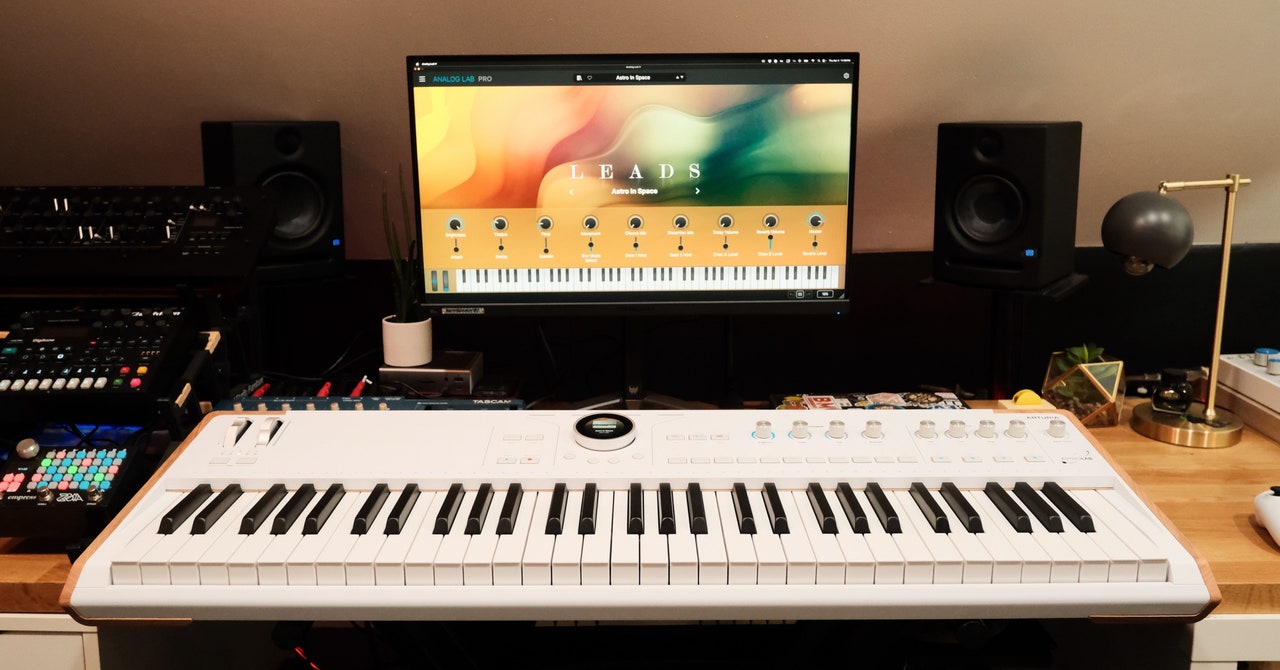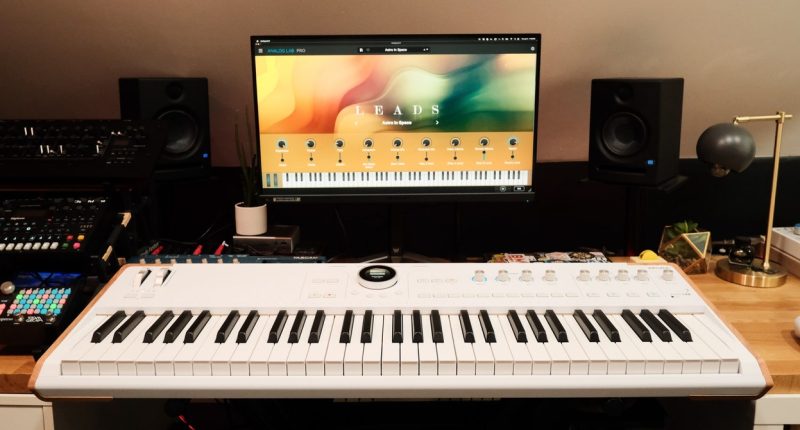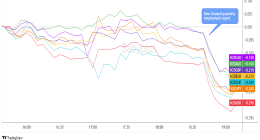.jpg)

But perhaps AstroLab’s best trick for finding what you need is playlists and songs. These are grouped presets that you’re able to bounce between with the push of a button. So if you need a quiet pad from an Ensoniq SQ-80 for the verse and a razor-sharp lead from an MS-20 for the chorus, you can group them into a song, which turns the instrument type buttons into direct shortcuts to specific presets. Songs are then further organized into playlists. You just press the arrow buttons below the screen encoder to jump to the next track in your set and load up another batch of presets.
If you can’t find what you need among the factory sounds or any of the countless sound packs available from Arturia, you can always design a patch from scratch in one of the instruments as part of the V Collection. Then you can save it as a preset and load it on the keyboard. Granted, this requires shelling out for V Collection, but it frequently goes on sale, and if you already own Analog Lab Pro, which is included with AstroLab, you get an even steeper discount.
World-Class Soft Synths
I’m halfway into this review, and I haven’t talked about the sound at all. This is partly because, well, it’s Analog Lab. It’s an industry staple and sounds fantastic. If you’re not familiar though, rest assured you’re getting some of the finest emulations of vintage instruments available. When you compare the price to even one of the iconic keyboards it’s recreating, the value is undeniable.
The Rhodes, Wurlitzer, and Hammond B3 compare favorably with what you’d find on a Nord stage keyboard, but for almost half the price. It convincingly delivers that percussive dizzying effect you’d get from an organ running through a Leslie and the smooth chime of a Fender Rhodes.
In addition, you get rather faithful versions of basically unobtainable synth gems like a Moog Modular, a Yamaha CS-80, or a Fairlight CMI II. Not to mention mass-market classics like the Yamaha DX7 and Casio CZ-101. Plus Arturia’s Pigments and Augmented lineup, which marry orchestral, piano, and vocal samples with a robust synth engine. You’ve got access to everything from crunchy lo-fi piano and EDM bass wubs to soaring string pads perfect for scoring a sci-fi thriller.
The only real weak spot is the acoustic pianos. They’re not terrible and have definitely improved over the years, but they still feel a touch thin and flat compared to the real thing. The chances that anyone would complain about them at your next gig, though, are slim to none.
It’s worth noting that this is currently the only way to get Arturia’s Pigments in hardware form. That’s something that gets me personally really excited. I think it’s the best softsynth on the market, and it can easily go toe-to-toe with other giants in the space like Massive and Serum.
Some will speak of things being a VST but built into a MIDI controller derisively. But that feels reductive here. For one thing, this isn’t just some bare-bones digital synth. And the hardware it’s crammed into is luxurious. The semi-weighted keys feel incredible, and they have aftertouch (though sadly not polyphonic). The pitch and mod wheels are solid pieces of aluminum, and the screen, while small, is bright and colorful. There are even some handsome wooden cheeks on the side. This looks and feels like a high-quality piece of gear.









